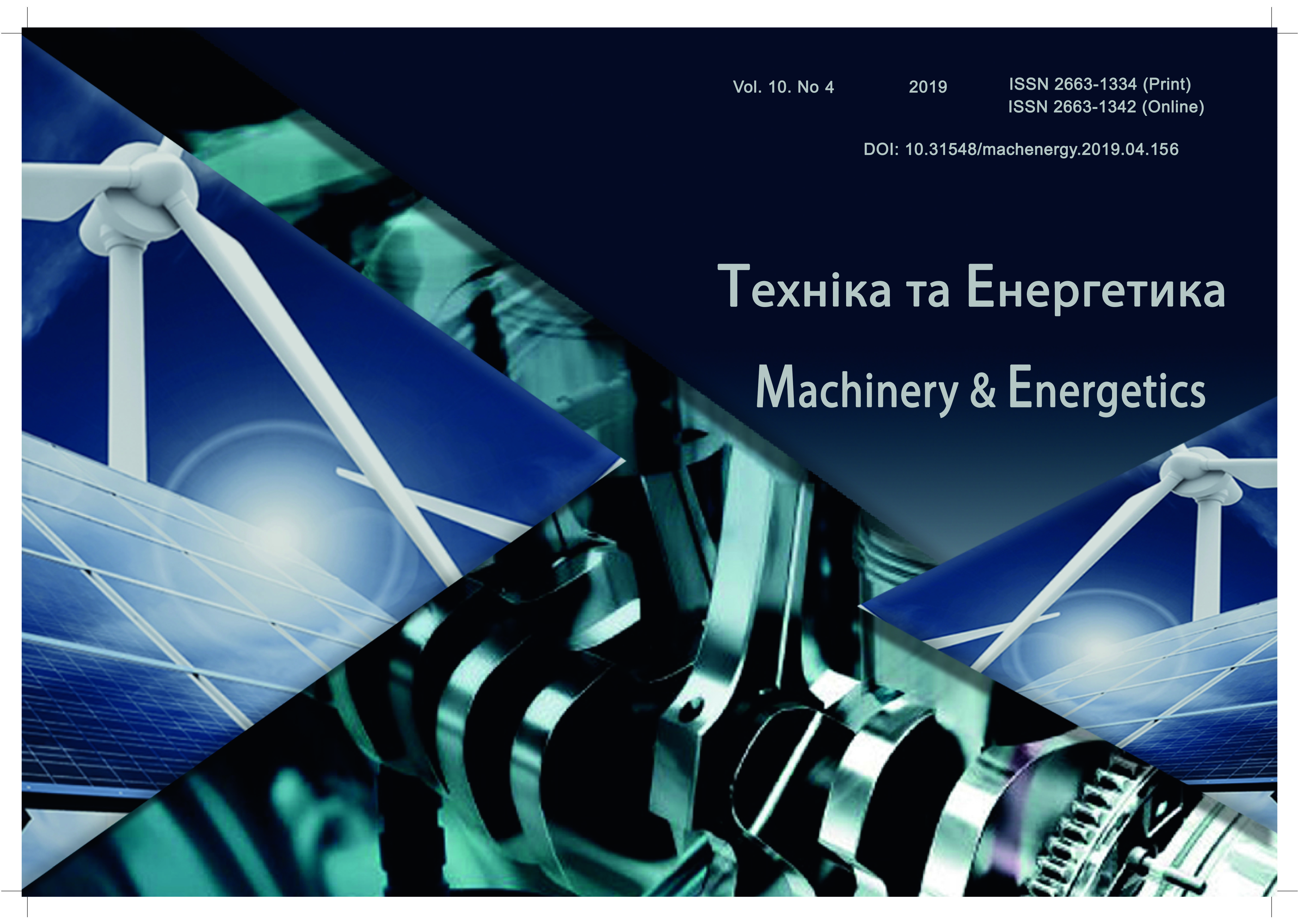Frictional interaction between soil and surface of tilling machine movable operating parts
DOI:
https://doi.org/10.31548/machenergy2019.04.157Keywords:
coefficient of friction, movable operating part, soil, sliding, rolling, tilling machine.Abstract
Principles of design of the agricultural machine movable operating parts shall be based upon physical, chemical and process mechanical properties of the agricultural materials, which they interact with during operation. One of the main parameters of the dispersed agricultural materials is the coefficient of friction between them and the surface of the movable operating part. The soil is considered to be the most difficult agricultural material to study. The complexity of the study is conditioned by a complex structure as the soil is a heterogeneous system containing solid, liquid and gaseous phases, as well as living organisms. Moreover, phase to phase ratio may vary with time.
Modern bibliographic sources provide extensive coverage of the studies in the field of the frictional interaction between two solid-state bodies. At the same time, the issue of the interaction between the solid-state body and dispersed medium, in particular with the real soil material still remains undiscovered.
As it follows from the study, three types of friction (sliding (kinetic), rolling, as well as combined rolling and sliding one) occur simultaneously during operation within the area of contact between the movable operating part and soil. A corresponding dependency is established in consideration of all possible types of friction to determine the overall coefficient of friction between the surface of the tilling machine movable operating part surface and soil. The Kolmogorov equation system has been developed to provide the option of determining all probabilities in respect of values of coefficients of friction between the surface of the tilling machine movable operating parts and soil as time variables.
References
Larchenkov, L. V., Protasenya, M. L., Protasenya, I. O. (2015). Design of agricultural machinery. Engineering: Republican interdepartmental collection of scientific works. Vol. 29, 147-156.
Alekseev, S. I., Xisamov, R. R. (2013). Friction of the soil on the vertical wall and its impact on the work of the Foundation in the sheet holder. Izvestia of St. Petersburg University of means of communication. Saint-Petersburg, no 4, 79-87.
Alekseev, V. V., Maksimov, I. I., Mishin, P. V. (2018). Obtaining functional dependencies for the friction coefficient in soils. Bulletin of NGIEI. Knyaginino. no 5 (84). 5, 34-43.
Ruzh'ev, V. A., Ozhegov, N. M., Kaposhko, D. A. (2015). Ensuring the durability of the working bodies of tillage machines taking into account environmental requirements]. Bulletin of Saint-Petersburg state agrarian University. No. 38, 254-259.
Abbaspour-Gilandeh Y., Hasankhani-Ghavam F., Shahgoli G., Shrabian V. R., Abbaspour-Gilandeh M. (2018). Investigation of the effect of soil moisture content, contact surface material and soil texture on soil friction and soil adhesion coefficients. Acta technologica agriculturae. 2, 44-50.
https://doi.org/10.2478/ata-2018-0009
Marani S. M. Shahgholi G. Moinfar A. (2019). Effect of nano coating materials on reduction of soil adhesion and external friction. Soil & tillage research. 193, 42-49. https://doi.org/10.1016/j.still.2019.05.026
Napiorkowski J., Lemecha M. (2018). Effect of phase structure of an abrasive soil mass on steel wear. International symposium on material science and engineering. 1946: URL: https://aip.scitation.org/ doi/abs/10.1063/1.5030316. https://doi.org/10.1063/1.5030316
Bartenev, I. M., & Pozdnyakov, E. V. (2013). Wear ability of soils and its influence on the durability of the working bodies of tillage machines. Forestry engineering journal. No. 3, 114-123. https://doi.org/10.12737/1774
Downloads
Published
Issue
Section
License
Relationship between right holders and users shall be governed by the terms of the license Creative Commons Attribution – non-commercial – Distribution On Same Conditions 4.0 international (CC BY-NC-SA 4.0):https://creativecommons.org/licenses/by-nc-sa/4.0/deed.uk
Authors who publish with this journal agree to the following terms:
- Authors retain copyright and grant the journal right of first publication with the work simultaneously licensed under a Creative Commons Attribution License that allows others to share the work with an acknowledgement of the work's authorship and initial publication in this journal.
- Authors are able to enter into separate, additional contractual arrangements for the non-exclusive distribution of the journal's published version of the work (e.g., post it to an institutional repository or publish it in a book), with an acknowledgement of its initial publication in this journal.
- Authors are permitted and encouraged to post their work online (e.g., in institutional repositories or on their website) prior to and during the submission process, as it can lead to productive exchanges, as well as earlier and greater citation of published work (See The Effect of Open Access).

